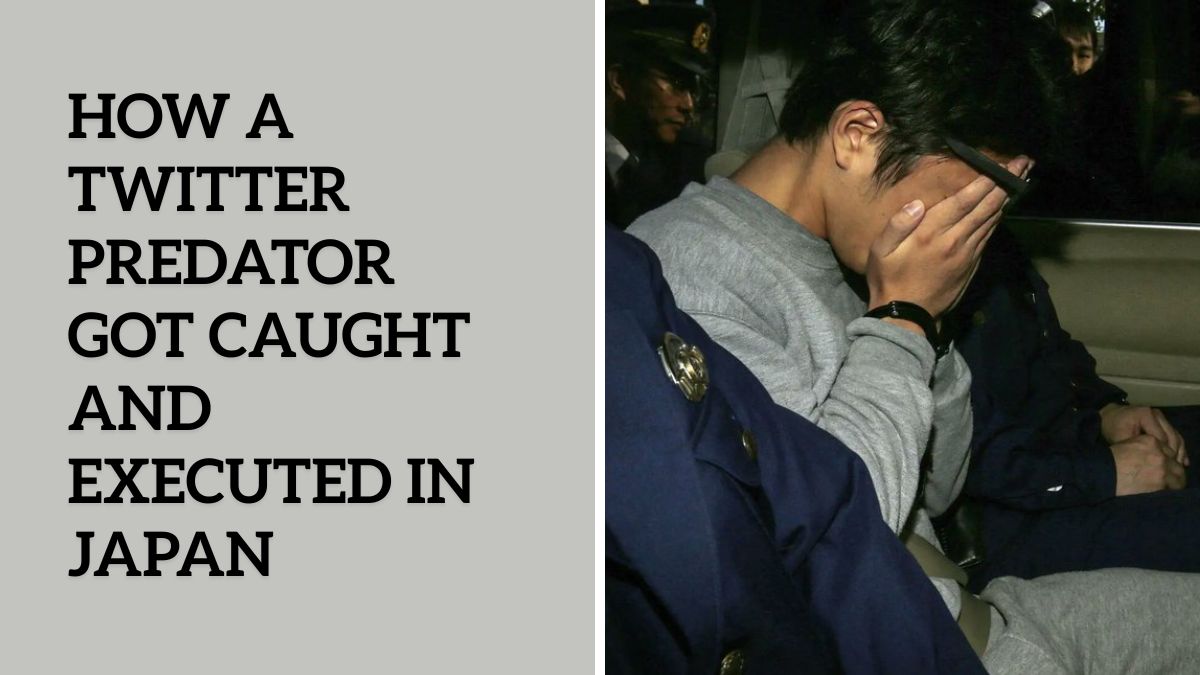New York: It started as a whisper in the dark corners of social media. A message. A direct message. A phrase that sounded like empathy but masked something sinister: “Let’s die together.” For nine vulnerable people in Japan, that phrase was the beginning of the end. It wasn’t sent by a friend or a fellow struggler. It came from a predator watching their pain online, waiting to strike.
This is the story of Takahiro Shiraishi, a man who used Twitter—now X—to find people who posted about suicide. Posing as a fellow sufferer or a sympathetic ear, he offered solace, companionship, and the promise of a peaceful end. But once they walked into his apartment, they never left. The world would later know him as the “Twitter Killer.”
On June 27, 2025, Shiraishi was executed in Japan, marking the country’s first death sentence carried out since 2022. His death closes a horrifying chapter but opens up urgent conversations about the power of social media, the gaps in mental health support, and the chilling realities of capital punishment in modern societies. Here’s a closer look at what really happened—and what we still need to learn.
Also Read: “Is This Gonna Affect My SHEIN Order?” and Other WW3 Memes That Hit Too Hard
Social Media Dangers: How the Twitter Killer Exploited Suicidal Posts
Shiraishi wasn’t just scrolling for news or memes. He was hunting. Using Twitter search functions and hashtags commonly linked to suicidal ideation, he located users expressing emotional distress. His messages were carefully constructed: he wouldn’t push, just empathize. He told them they didn’t have to die alone.
One by one, they believed him. Between August and October 2017, he lured nine people—eight women and one man—into his apartment near Tokyo. Each victim had posted something online that indicated they were struggling. Shiraishi manipulated that vulnerability, building trust fast. Then, in a methodical pattern, he murdered and dismembered them. Police would later discover body parts stored in coolers and toolboxes.
This wasn’t just a story about a killer. It was a warning about the emotional blind spots we have in digital spaces, and how dangerous private DMs can become.
The Twitter killer, Takahiro Shiraishi was executed today in Japan. He killed 9 schoolgirls #twitterkiller pic.twitter.com/unMnU7C03R
— Vlad Gasparian (@UncleV2801) June 27, 2025
Online Mental Health Support: What Failed His Victims
Japan has one of the highest suicide rates among developed nations, especially among the youth. While the country has expanded mental health support services in recent years, Shiraishi’s case exposed how easily people can fall through the cracks.
Helplines exist, but they are often underfunded and culturally stigmatised. Seeking help is still taboo for many, particularly for issues like depression or suicidal thoughts. For Shiraishi’s victims, the internet felt safer than traditional avenues. But safety online is an illusion when predators know what hashtags to track.
The case pushed Japanese society to confront its silent mental health crisis and inspired international discussions on how digital spaces can offer genuine help—and how they must do better at spotting the predators.
Capital Punishment Debate: Japan’s Secretive Execution Sparks Global Reflection
On June 27, 2025, Takahiro Shiraishi was hanged in a detention facility. It was Japan’s first execution in three years. In Japan, executions are carried out by hanging, and inmates are often notified only a few hours before it happens. Families and the public usually find out only after the fact.
The secrecy and swiftness of the process have drawn international criticism. While a majority of Japanese citizens reportedly support the death penalty, human rights groups say that the lack of transparency raises serious ethical concerns. Japan and the U.S. remain the only G7 countries to still carry out executions.
Shiraishi’s execution reignited the global debate on capital punishment. Can justice truly be served in silence? Or does secrecy dilute the power of deterrence and accountability?
Platform Accountability: What’s X (Formerly Twitter) Doing Now?
Following Shiraishi’s arrest, Twitter faced immense backlash for allowing such predatory behavior to go unchecked. Although the platform had policies around self-harm and suicide, enforcement was spotty. Users reported that even after flagging suspicious accounts, actions were rarely taken.
Since then, X has updated its community guidelines, enhanced AI-based moderation, and partnered with more mental health organisations. But critics argue that algorithmic moderation still lacks the nuance needed to distinguish between cries for help and red flags of predation.
The question remains: are social media platforms doing enough to protect their most vulnerable users? Or are profit models still prioritised over safety?
Lessons for All of Us: How to Stay Safe in Digital Conversations
The “Twitter Killer” case isn’t just about Japan or Twitter. It’s a global cautionary tale about how isolation, mental health, and digital trust intersect. In a world where many people feel safer sharing online than in real life, we must all become more vigilant.
If you or someone you know is struggling, seek help from verified sources. Be cautious about DMs from strangers, even if they seem sympathetic. And if you see something off online—say something. Report the post, alert the platform, or share it with someone who can help.
The internet can be a lifeline, or a trap. It all depends on who’s on the other end of the screen.







